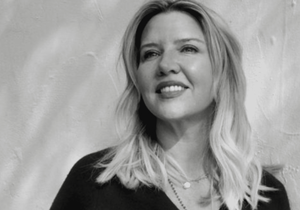9 Lives | Chapter 6 | Part 3: The Body Scaffold - The Biological Stack for Optimal Aging
Of the Three Keys, a healthy body and mind are the base layer of everything else. Thus, optimizing the biostack is the first key to thriving in elderhood.
Here's what we know at this point in history about behaviors and supplements to thrive as we age. Self-responsibility in this area is key, it will not come from the medical establishment.
Muscle Mass and Bone Density
- Why it Matters: Muscle mass and bone density are essential for physical resilience, stability, and longevity. Strengthening these areas reduces the risk of fractures and falls and helps maintain independence.
-
How to Improve:
-
Grip Strength and Leg Strength: These are key indicators of functional strength and longevity. Include exercises like:
- Resistance Training: Incorporate weights, resistance bands, or bodyweight exercises 2–3 times a week, focusing on compound movements (like squats, lunges, deadlifts, and rows) to target multiple muscle groups.
- Functional Exercises: Practice exercises that mimic everyday activities, such as carrying weights, rising from a seated position, and climbing stairs, to enhance leg and grip strength.
- Calcium and Vitamin D: Maintain bone health by ensuring adequate intake of calcium and vitamin D. Consult with a healthcare provider to check if supplements are needed based on your diet and sun exposure.
-
Grip Strength and Leg Strength: These are key indicators of functional strength and longevity. Include exercises like:
Movement for Circulation, Flexibility, and Joint Conditioning
- Why it Matters: Regular movement improves blood flow, which is crucial for nutrient delivery and waste removal at the cellular level, supports joint health, and helps maintain flexibility.
-
How to Improve:
- Daily Movement: Aim for at least 30 minutes of activity daily. This could be a brisk walk, cycling, or even dancing. Incorporate low-impact options like swimming or elliptical workouts to minimize joint strain.
- Stretching and Mobility Exercises: Spend 5–10 minutes daily doing dynamic stretches or yoga. Focus on gentle moves that extend your range of motion, like hip openers, shoulder stretches, and gentle twists.
- Joint Conditioning: Practice exercises that target joint health, such as tai chi or specific joint-focused mobility routines, to increase range of motion and strengthen stabilizer muscles.
Anti-Inflammatory, Low-Toxin Diet (+Hydration)
- Why it Matters: Chronic inflammation accelerates aging and contributes to various diseases. A diet rich in anti-inflammatory foods reduces oxidative stress and supports immune function.
-
How to Improve:
- Whole Foods: Focus on fruits, vegetables, whole grains, and lean proteins. Avoid processed foods and additives that can contribute to inflammation.
- Anti-Inflammatory Foods: Add foods rich in omega-3s (like salmon, chia seeds, and walnuts), antioxidants (like berries, leafy greens, and turmeric), and fiber.
- Hydration: Drink water throughout the day. Proper hydration aids digestion, joint lubrication, and overall cellular function.
- Limit Inflammatory Substances: Avoid processed sugars, hydrogenated oils, enriched flour, alcohol, and smoking—all of which can increase inflammation and toxin load in the body.
Hormone Therapy
- Why it Matters: Hormone levels decline with age, impacting mood, energy, muscle mass, and bone density. A gentle approach to hormone therapy can support overall vitality.
-
How to Improve:
- Personalized Hormone Therapy: Consult a qualified healthcare provider to assess your hormone levels and discuss light-touch options such as bioidentical hormone replacement therapy (BHRT). This may involve low doses of estrogen, progesterone, or testosterone, tailored to your needs.
- Regular Monitoring: Hormones affect many systems, so checkups are essential to ensure that therapy is beneficial without negative side effects.
Peptide Revolution
- Why it Matters: Peptides are short chains of amino acids that act as signaling molecules, potentially aiding tissue repair, muscle growth, fat metabolism, and cognitive function.
-
How to Improve:
- Consider Therapeutic Peptides: Certain peptides, such as BPC-157 for tissue healing, MOTs-C, GHK, or CJC-1295 for growth hormone release, are becoming popular options for anti-aging and cellular repair. Work with a healthcare provider to determine if they’re suitable for you.
- Stay Informed: Peptide therapy is rapidly evolving. Educate yourself on new research and work only with trusted medical professionals.
Home Biohacking Techniques
- Why it Matters: Biohacking at home can provide accessible ways to improve your well-being through practices that boost circulation, reduce stress, and enhance cellular function.
-
How to Implement:
- Grounding: Practice grounding (also called earthing) by spending time barefoot on grass, sand, or natural earth. This can reduce inflammation and improve mood by balancing free radicals.
- Breathwork: Use breathing exercises to manage stress and increase oxygen flow to tissues. Techniques like box breathing or diaphragmatic breathing can be done daily to enhance relaxation and resilience.
- Contrast Therapy: Use hot-cold exposure (such as alternating hot showers with cold water bursts) to improve circulation, reduce inflammation, and stimulate the immune system.
Bonus Points: Supplements, Nootropics, NAD
- Why it Matters: Targeted supplements and nootropics can support cognitive function, energy production, and cellular repair. NAD (nicotinamide adenine dinucleotide), in particular, is essential for cellular metabolism and mitochondrial function.
-
How to Implement:
- Core Supplements: Consider adding omega-3 fatty acids, magnesium, and vitamin D to your routine. Consult a healthcare provider for advice on doses and compatibility with your diet.
- Nootropics for Brain Health: Certain nootropics, like lion's mane mushroom, rhodiola, or L-theanine, may support mental clarity, memory, and focus.
- NAD+ Boosters: NAD levels decrease with age. Supplementing with NAD precursors, such as NMN (nicotinamide mononucleotide) or NR (nicotinamide riboside), may support cellular repair, energy, and overall longevity.
PS: Drop Smoking, Alcohol, White Sugar, Hydrogenated and Seed Oils, Enriched Flour
- Why it Matters: Eliminating or minimizing these substances is essential for reducing inflammation, toxin buildup, and overall health risks. They accelerate aging processes and detract from the benefits of the practices above.
-
How to Implement:
- Gradual Reduction: If eliminating these all at once feels daunting, begin by cutting back gradually. For example, reduce sugar and enriched flour intake weekly, and replace these items with healthier options.
- Substitutes: Find alternatives that satisfy cravings without the health drawbacks, like herbal teas instead of alcohol or natural sweeteners (such as monk fruit or stevia) instead of white sugar.
- Lifestyle Changes: Engage in activities like cooking meals at home, joining fitness groups, or tracking your progress to reinforce healthier habits and sustain them long-term.






















